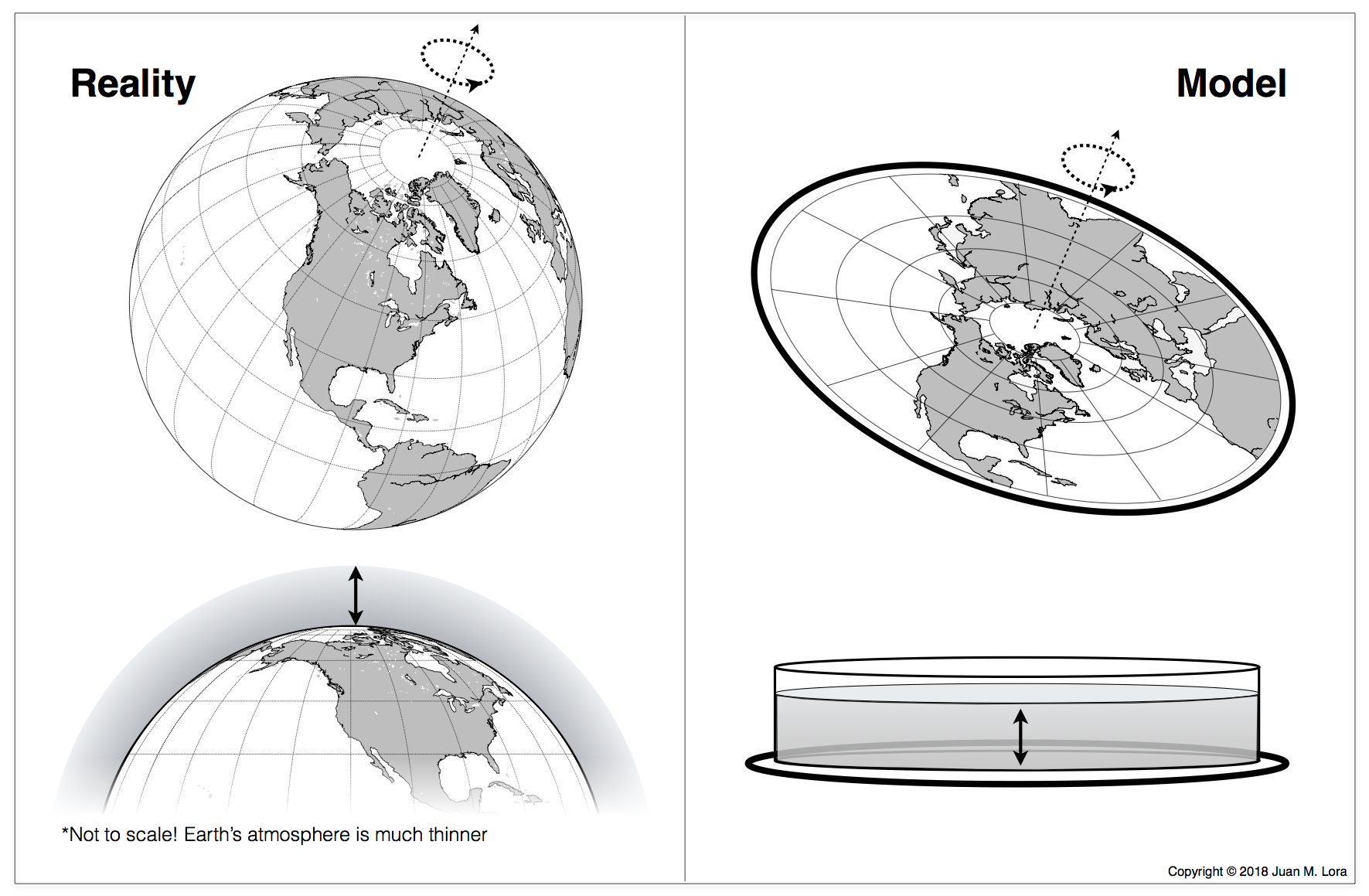
Our mission: expand and improve teaching of geophysical fluid dynamics (GFD) at all age levels
What is “geophysical fluid dynamics”? Let’s break it into pieces:
- “Geo”: Earth
- “Physical”: physics
- “Fluid”: liquids and gases
- “Dynamics”: how things move around
So GFD = the physics of fluid motions on Earth and other planets. The fluids we’re most interested are the air in the atmosphere, the water in the ocean, and the liquids within a planet’s interior.
Our tool: affordable, accessible rotating tank-based teaching
It turns out that the rotation of the Earth is extremely important for these fluid motions. Fortunately, as the schematic at the top of this page illustrates, we can model Earth’s atmosphere (and ocean, and interior) using a spinning tank of water. So DIYnamics develops cheap and effective rotating tank platforms and provides information both on how to build them and use them as effective teaching tools.
Want to learn more about these materials? Visit our pages on the DIYnamics Kits here and on teaching with them here.
Our reach: classrooms around the world
The DIYnamics Kits have proven to be effective tools in helping audience members of all ages learn more about GFD and the world around us! The rotating tank platforms are used to perform a wide variety of experiments of diverse scope and breadth. In elementary school to university level classrooms and in outreach events, the DIYnamics Kits have shown to be a hit as they provide a strong visual analog to real world phenomena prompting rich back and forths. Inspired by the do-it-yourself nature of our designs, the growing and global DIYnamics community works together to bring rotating-tank based teaching to an ever increasing audience.
Visit our Events page to learn more about DIYnamics events, and check out our Blog page for summaries and pictures of developments by the DIYnamics community. Follow us on on Twitter at @DIYnamicsTeam for the latest updates!
Want to learn more about who we are and the help we’ve gotten? Visit our Team and Acknowledgments pages.
